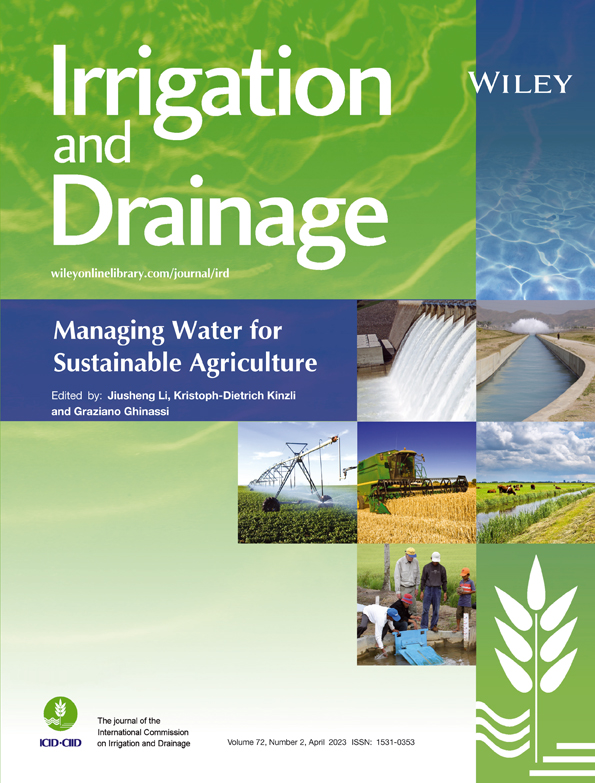Evaluation of field water balance-based deficit irrigation strategies for seasonal sugarcane (Saccharum officinarum L.) in a semiarid Indian plain
Article title in French: Évaluation des stratégies d'irrigation déficitaire basées sur le bilan hydrique des champs pour la canne à sucre saisonnière (Saccharum officinarum L.) Dans une plaine indienne semi-aride
Abstract
enThe impact of deficit irrigation (DI) on sugarcane (Saccharum officinarum L.) growth, yield and quality was investigated in field experiments during 2015–2017. The treatments included applying water deficit at three levels (0%, 30% and 60%) during three growth stages (development, mid-season and end) in order to investigate the impact of a specific water deficit during each growth stage separately. The experiment included 27 treatments replicated twice in a randomized block design. Irrigation scheduling was based on the field soil water balance in the root zone and the water deficit that needed to be provided in the respective treatments. The study found that as the water deficit increased, the growth, yield characteristics and sugarcane yield decreased. Deficit-free irrigation throughout the season registered maximum cane yield (174 t ha−1). Water deficits of 30% and 60% throughout the season reduced sugarcane yield by 14% and 40.7%, respectively, compared with the condition without water deficit. Based on the statistical comparison of yields, the mid-season stage was identified as the most sensitive stage, followed by the development and end stages according to DI criteria. A water deficit applied at the end of the season had only a minor impact on yield. Without significant yield loss, an irrigation strategy for deficit conditions of 0% water deficit in the development stage, 30% in mid-season and 60% at the end stage was found to be sufficient. Sugarcane quality parameters did not change substantially when there was a water deficit.
Résumé
frL'impact de l'irrigation déficitaire (DI) sur la croissance, le rendement et la qualité de la canne à sucre (Saccharum officinarum L.) a été étudié lors d'expériences sur le terrain au cours des années 2015–2017. Les traitements comprenaient l'application d'un déficit hydrique à trois niveaux (0%, 30% et 60%) pendant trois stades de croissance (développement, mi-saison et fin) afin d'étudier l'impact d'un déficit hydrique spécifique au cours de stade de croissance séparément. L'expérience comprenait 27 traitements répliqués deux fois selon un plan en blocs aléatoires. La programmation de l'irrigation était basée sur le bilan hydrique du sol dans la zone racinaire et sur le déficit hydrique à fournir dans les traitements respectifs. L'étude a montré que lorsque le déficit hydrique augmente, la croissance, les caractères de rendement et le rendement de la canne à sucre diminuent. L'irrigation sans déficit tout au long de la saison a enregistré le rendement maximal de la canne (174 t ha−1). Un déficit hydrique de 30% et 60% tout au long de la saison a réduit le rendement de la canne à sucre de 14% et 40.7% par rapport aux conditions de l'absence de déficit hydrique. Sur la base d'une comparaison statistique du rendement, le stade de mi-saison a été identifié comme le stade le plus sensible, suivi par le stade de développement et le stade final, selon les critères de ID. Un déficit hydrique appliqué à la fin de la saison n'a eu qu'un impact mineur sur le rendement. Sans perte de rendement significative, une stratégie d'irrigation pour des conditions de déficit avec 0% de déficit hydrique au stade de développement, 30% à la mi-saison et 60% à la fin de la saison s'est avérée suffisante. Les paramètres de qualité de la canne à sucre n'ont pas changé de manière substantielle en cas de déficit hydrique.
Open Research
DATA AVAILABILITY STATEMENT
Research data are not shared.




